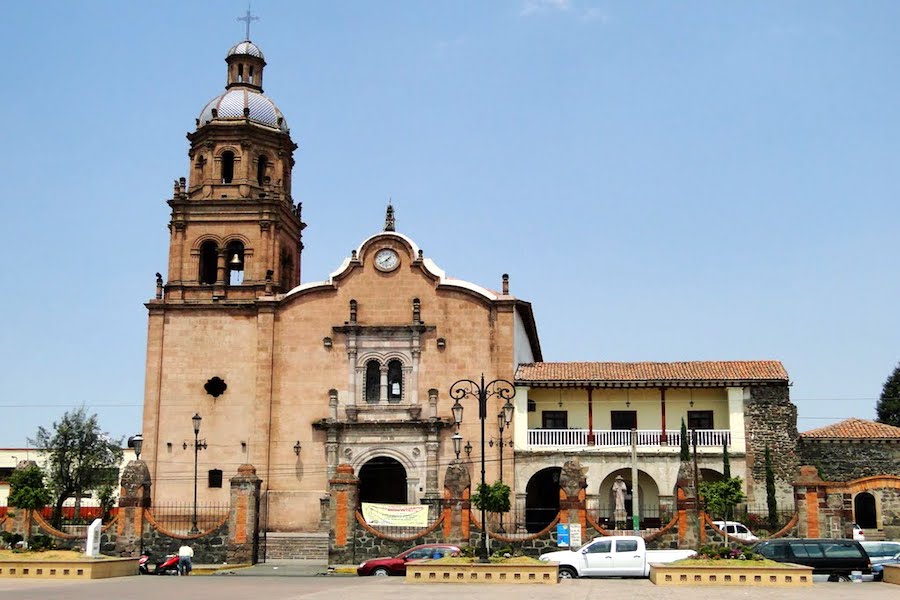Event Venue
Pátzcuaro, Michoacán, México.
GPS: 19.5134546, -101.6091876
Origins
The Feast of the Cross of May has its antecedents in the pre-Christian celebration known as the Festival of the Mayos (or Palo de Mayo, in English maypole), which commemorated the average time of spring by paying homage to nature. In particular, it was celebrated by decorating a tree or by erecting a trunk or totem tree to which ornaments or flowers were put, while performing ritual dances and singing or making recitations. With the arrival of Christianity, this feast was adapted to the new faith, replacing the totem with the Christian cross. In some countries the festivities of the Cruz de Mayo and Palo de Mayo are maintained in parallel.
Another interpretation seems to have its origin in the discovery by Saint Helena of the cross where Christ died. The story tells how the emperor Constantine I the Great, in the sixth year of his reign, faces against the barbarians on the banks of the Danube, in a battle whose victory is believed impossible because of the magnitude of the enemy army.
At present, the Christian liturgy has eliminated this celebration from its calendar, being unified with the celebration of the Exaltation of the Holy Cross, celebrated on September 14, a holiday of similar origin.
In Mexico
The celebration of the Holy Cross began at the dawn of the sixteenth century, when Captain Juan de Grijalba named “Isla de la Santa Cruz” to the island of Acuzamil or Cozumel de Quintan Roo. In Mexico, on May 3, “El Día del albañil” is celebrated and coincides with the celebrated celebration of the day of the Holy Cross for this reason, the masons from a day before build their cross of the same waste of the work to place it in the top and top of the construction.
The celebration begins with the placement of a cross, adorned with flowers and paper, in a high and visible part of the construction (work). The cueterío ignites and continues with a party with typical food of the region, beer, tequila, mezcal, and other derivatives of the fermentation in the place where the work is developed.
And so, between lime, sand, scaffolding, rods, wire, beams, lumps of cement, the masons celebrate the day when the master mix shouts, the spoon and the plumb line leave it for a beer boat “because that’s the tradition”.
Although it is a very ancient celebration, commemorating the Cross in which Christ made his greatest sacrifice and recalling his triumph over death through his resurrection, the cross also has a second meaning, which is related to an ancient indigenous belief .
Before the Conquest, the Mesoamerican Indians related to the cross with the cardinal directions of the indigenous cosmography north, south, east west and center that graphically formed the cross.
With the arrival of the Spaniards, this evocation was eradicated and replaced by the religious symbolism of the Holy Cross.
Since then the celebration of this festival was established with the construction of houses, churches, convents, and other buildings with indigenous labor.









